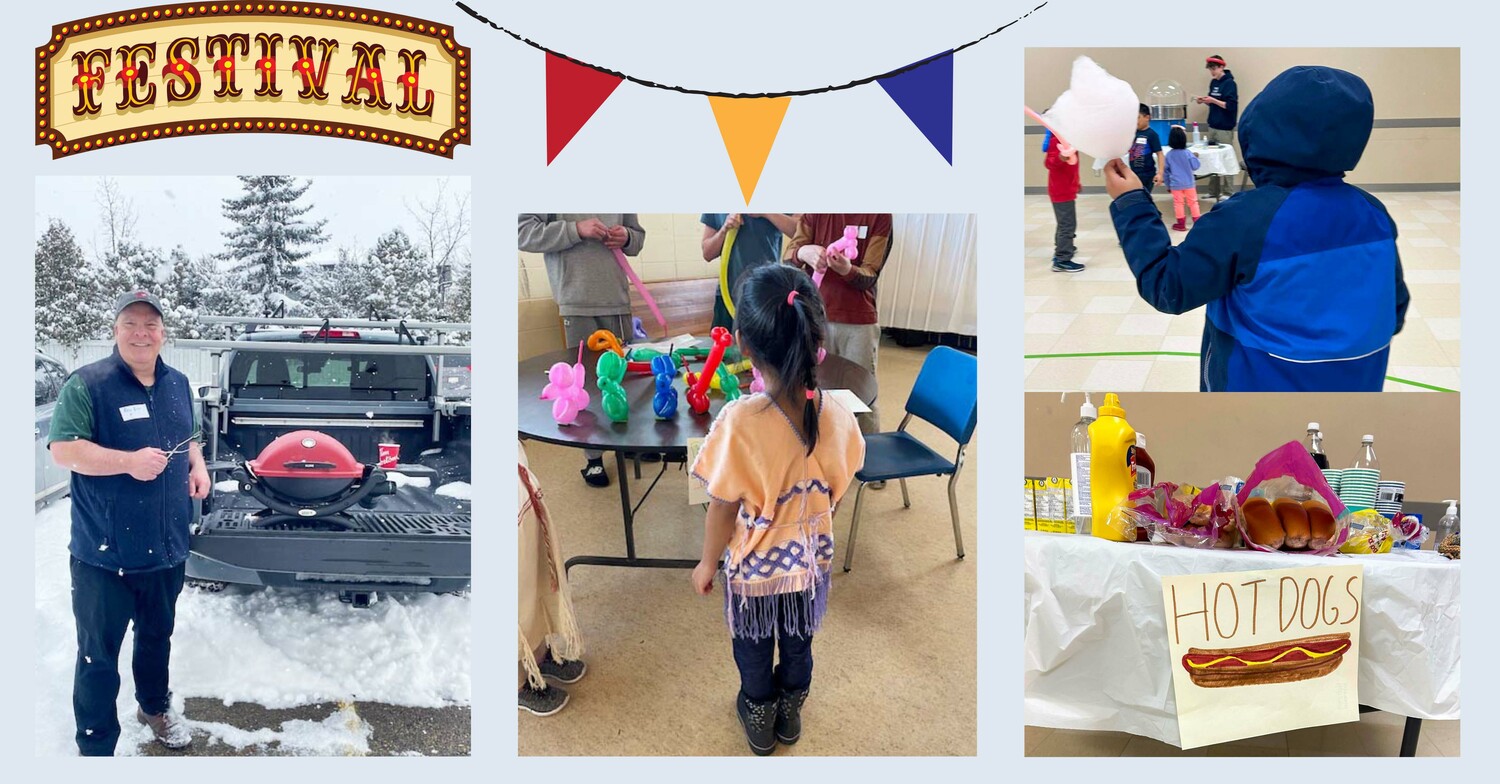
For two days during Spring Break in Edmonton and elsewhere in the province, March 28 and 29, the youth group of St. Paul's Anglican Church provided a carnival-like atmosphere for families in the warmth of St. Paul’s and St. Matthias church halls.
As an Alberta Clipper snowstorm rolled into the area on Thursday, the youth group joined the congregation of Christian Fellowship (a Burmese church) and Little Angels Daycare to about 77 people indoors with booths of cotton candy, crafts, art, face-painting, friendship bracelets and balloon animals.
With great enthusiasm, the youth led the Indigenous games taught to them by Indigenous educator Sarah Kaup. She had visited the group a few months prior, passing along the teaching of community games from the original people of our land.
The youth had also learned from Anglican lay leader Fred Matthews, who shared the story of what God was doing in the community of the Church of the Nativity, Frog Lake. Unfortunately, the snowstorm meant needing to postpone the youth’s visit to see Fred the following week.
Despite worsening weather conditions, the youth managed to make their way over to St. Matthias on Friday to work with St. Peter's Anglican Congregation, where about 37 people took part in similar programming. Families were grateful for the chance not to be stuck at home in the blizzard.
"Running the festivals was an incredible experience!” said Ashlyn Kregel, 14, who ran the craft table. “It was great talking to and helping the kids with a variety of crafts. I was teaching one of the kids how to make a bracelet in between games, and she would run up after a game had been completed to get the next step. However, the best part was seeing everyone having fun and running around. I think everyone at the festival was having a good time."
For Jordan Young, directing the barrier-free festivals, which were free to attend and included food and coffee, was an “incredible experience. Our main goal was to bring the community together in a fun and engaging way. I had the chance to help with a variety of activities, ensuring that everything ran smoothly and that everyone felt included. I got involved in making balloon animals, preparing cotton candy, getting face paint done, and facilitating Indigenous and parachute games. One of my favourite parts was seeing people of all ages enjoy the many craft activities we offered, from painting to creating unique, handmade pieces. It was amazing to watch families gather to work on their projects, and the creative energy was contagious.
"A heartwarming moment came when my mom was working at the face-painting booth. A little girl turned to my mom and said, 'This festival is sooo much better than the last one I went to!' It was such a rewarding experience to witness the joy on everyone’s faces and know we had created something that really brought the community together. From the lively games to the arts and crafts, it felt like we were making a meaningful impact, and I was proud to be a part of it."
Handing out cotton candy resulted in a memorable moment for Weston Young. “A little boy came up to me to ask for some. I gave him some, and he ran over to his sister and gave it to her. This showed me the kindness he had in his heart.
He adds that helping with the festivals enabled the youth volunteers to “expand our leadership skills as well as patience.”
Callie Roemmich says that in addition to all the good things that happened while she was helping with the festivals, there were a few hiccups. "Some of the challenges we faced included the balloon pump breaking (and our prayer team coming in handy), a broken mic system, and some other unexpected issues." She describes volunteering at the festivals as a “worthwhile experience.”
The Rev. Eric J. Kregel, priest in charge of St. Peter’s and assistant priest at St. Paul’s, says his favourite part of the festivals happened at the very start: “We gathered for prayer with the Burmese church, right before we started. Both churches were running booths. We prayed and ended our time by saying the Lord's Prayer. And then the Burmese church prayed the Lord's prayer in their dialect, Karenni (related Tibeto-Burman languages)."




